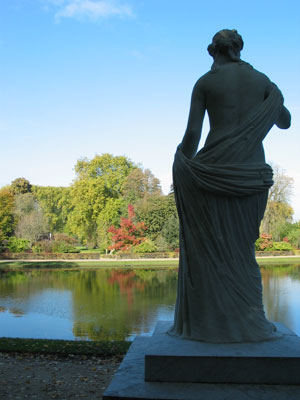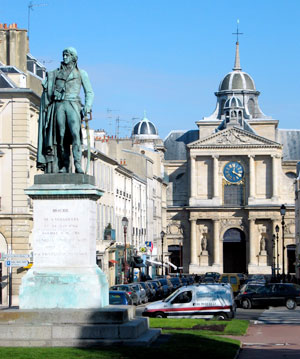VERSAILLES, FRANCE – Okay, so why did it take the French so long to revolt if this revolting monument to decadence is an example of what the royals of the day were spending the people’s money on.
It’s hard to fathom today but while people starved at the gates of this incredible example of extreme extravagance, the royals, led by the compassionate (not!) Marie Antoinette, told them to eat cake.
It’s the same gate I find myself standing at, waiting patiently along with dozens of other tourists to gain entrance into a palace that started out as a simple hunting lodge back in 1624. From there it grew into this limestone giant featuring 700 rooms, 1,250 fireplaces, 67 staircases, and 1,800 acres of pristine woodlands and gardens.
After being told by a guard not to eat cake, or any other food on the premises, I made my way past some green statues of kings riding their trusty steeds and into a tiled courtyard before reaching the main entrance.
The place is overwhelming - and I haven’t yet seen the treasures housed inside.


Left: The gardens at Versailles are especially lovely. Right: The surrounding town matches the palace's regal look.
The buildings are supported by pink columns and giant statues, like the Water Parterre, line the massive concrete pools at the back of the multi-winged palace. The wings were added by other members of the French royal family off the original building built by King Louis XIII.
The interior of the buildings, especially the main palace, is where you’ll really see decadence. Rooms so large they could house a whole family, come dripping in gold, crystal, fine silks, handcrafted furniture and the best art money could buy.
The bedrooms occupied by Louis XVI and Marie Antoinette look like museums, with the finest of everything crammed into them. The large windows afforded the king and queen spectacular views of the luscious gardens, which are the biggest drawing card here. See if you can spot the side door Marie used to escape the angry mobs when the French Revolution broke out in 1789. It’s embedded in the wall and was used by the poor maids who were forced into the queen’s service. By the way, both Louis XVI and Marie were caught and beheaded.
But the grandest – and biggest - room in the entire palace is the Hall of Mirrors, featuring 17 mirrors facing 17 windows in which the massive gardens are reflected. Words just don’t do justice to this ornate room where in 1871 Otto von Bismarck proclaimed the German empire and where the Treaty of Versailles was signed, thus declaring an end to World War I.
A stroll around the palace’s wonderfully manicured grounds takes people down winding marble steps to long gravel boulevards lined with flowers and shrubs. Small lakes dot the landscape and half-naked Roman and Greek statues are hidden amongst the gardens’ splendor. The city-sized palace even has its own cathedral in site.
Versailles was turned into a museum in 1837 and along with the royal leftovers, also displays France’s many other historic artifacts.
The town of Versailles, nicknamed “Little Paris” is well worth to trip in itself. The royals attracted a lot of attention and around the palace grew a handsome city of wide, tree-lined boulevards and regal homes and churches. There’s an outdoor market that rivals anything else France has to offer and the town’s restaurants offer up some interesting food. This being France, Versailles’ restaurants serve pizza with raw eggs and crème fraiche as toppings.
Chateau de Versailles really is a place fit for kings – and poor tourists.
Information
- Chateau de Versailles is easily reached from Paris on the RER, France’s high-speed double-decker train system. It costs about $10 to enter.
- For information on Chateau de Versailles go to
chateauversailles.fa
- For information on France, go to
franceguide.com
About the Author
Marc Atchison is a veteran journalist and a seasoned traveller with more than 20 years of travel writing experience. As the former Travel Editor of the Toronto Star, Canada's largest newspaper, and now Editor-in-Chief and Senior Writer for TraveLife magazine (Canada) and travelife.ca, Marc has been to over 100 countries in the world. Japan is one of his favorite destinations and he's been there on numerous occasions.